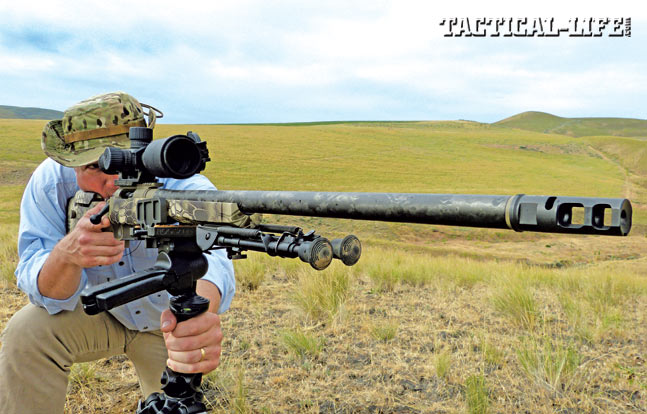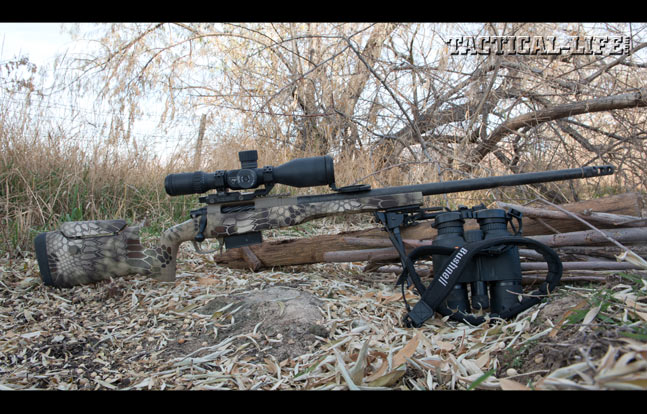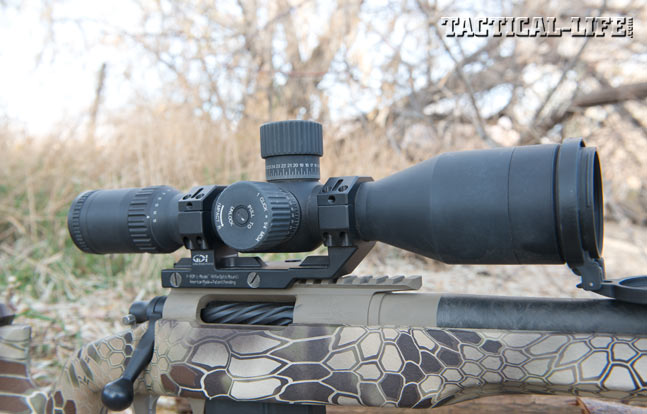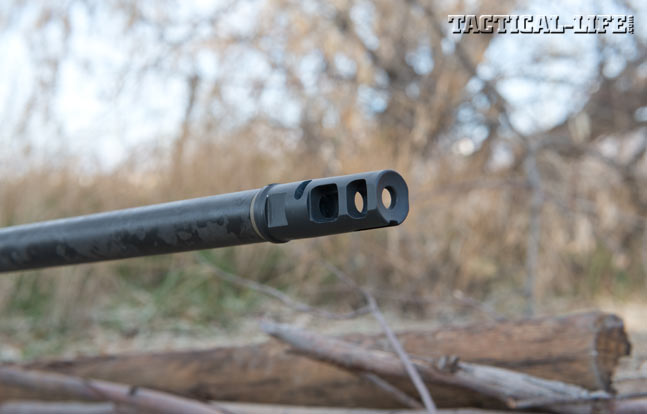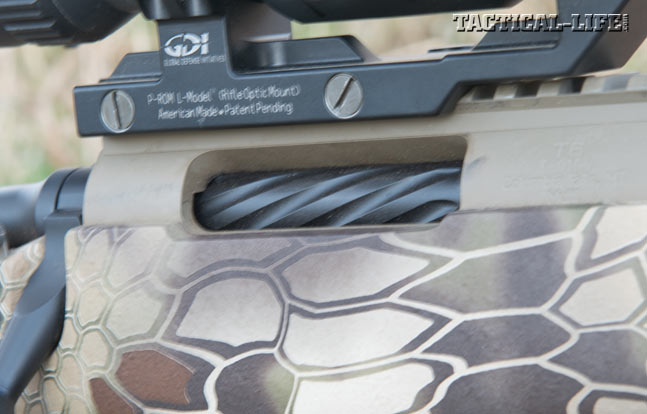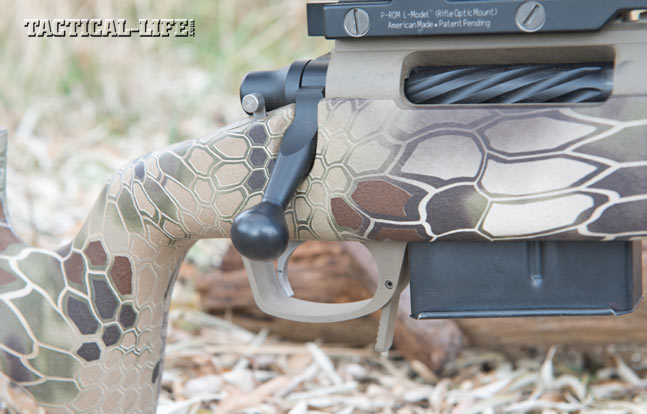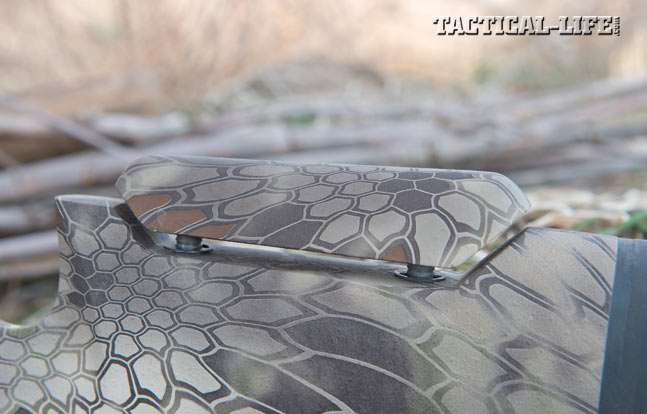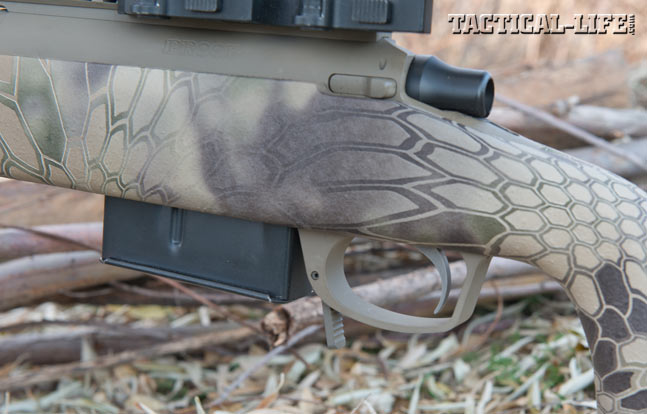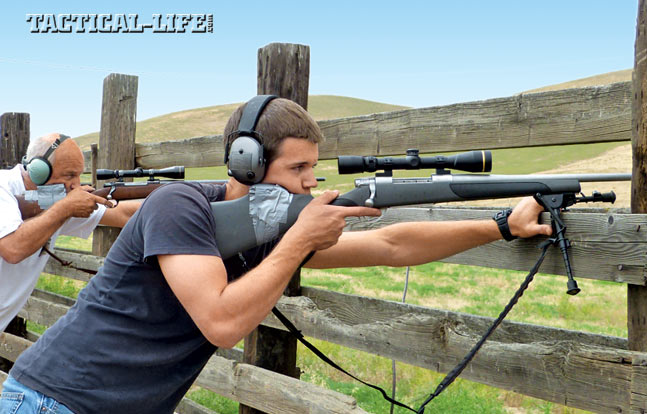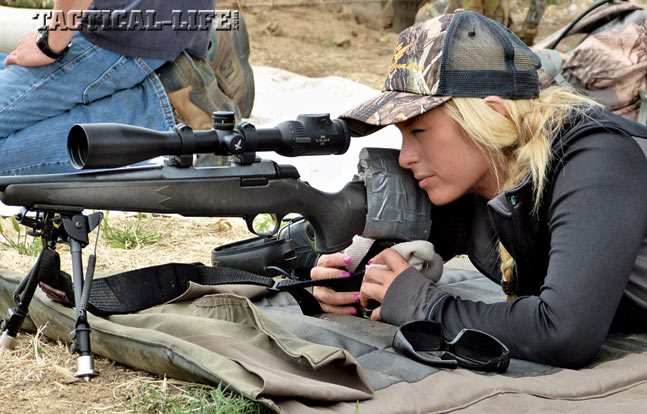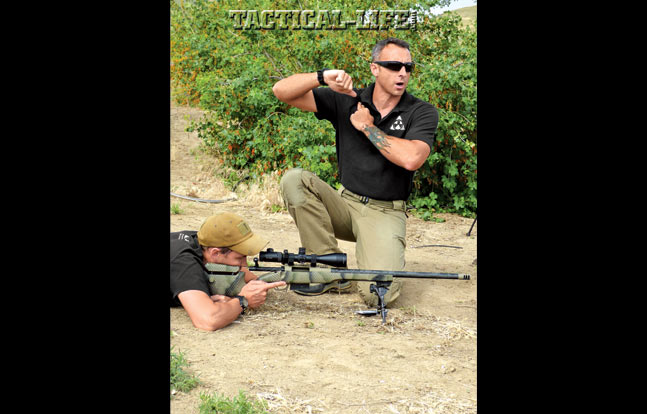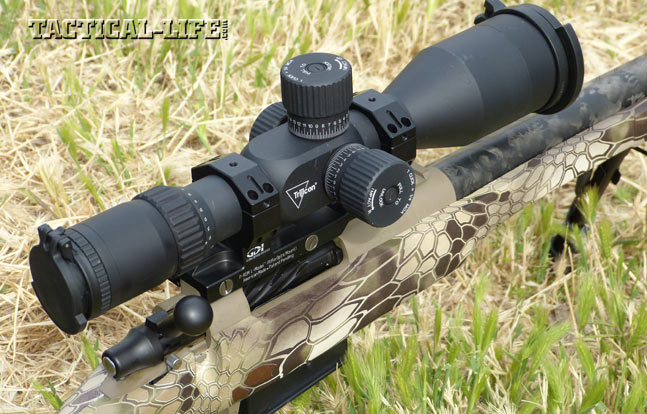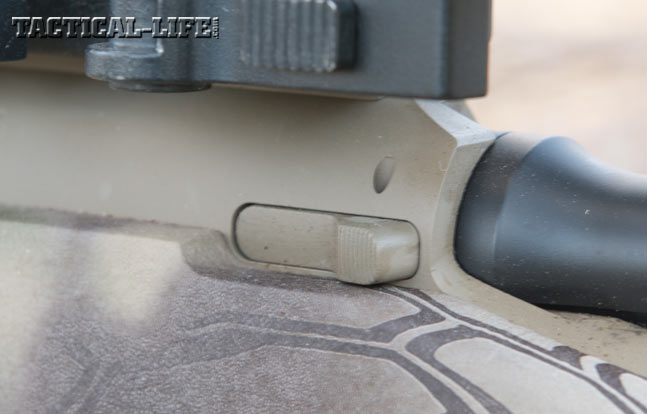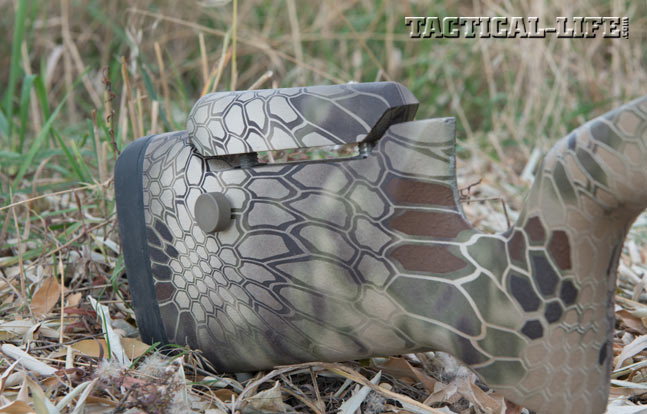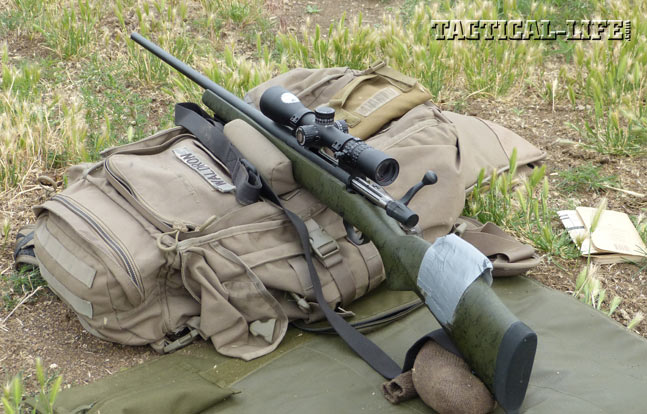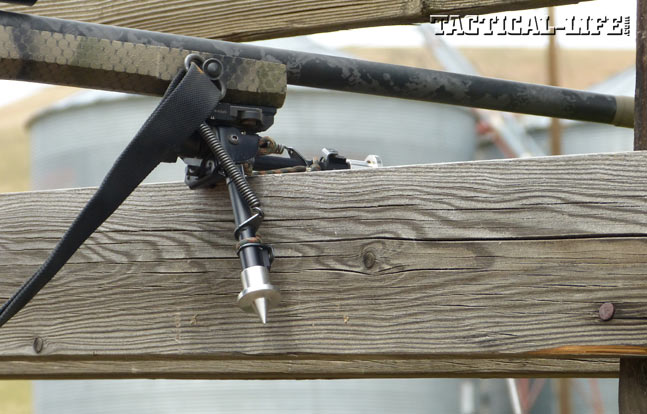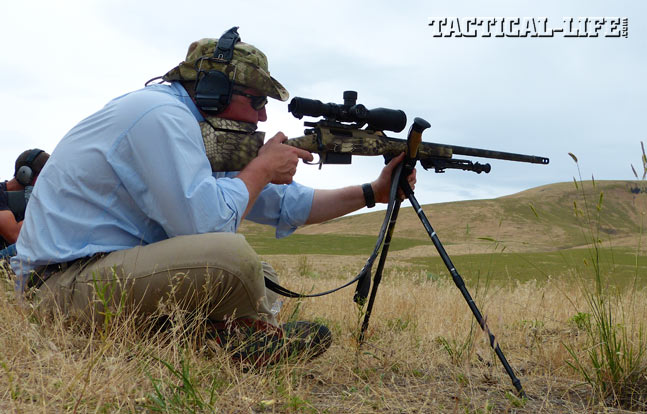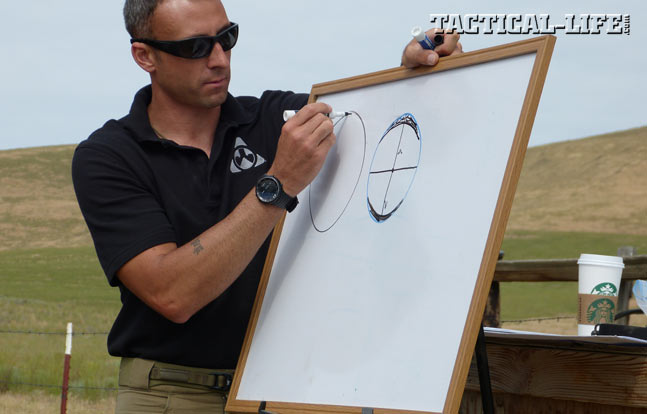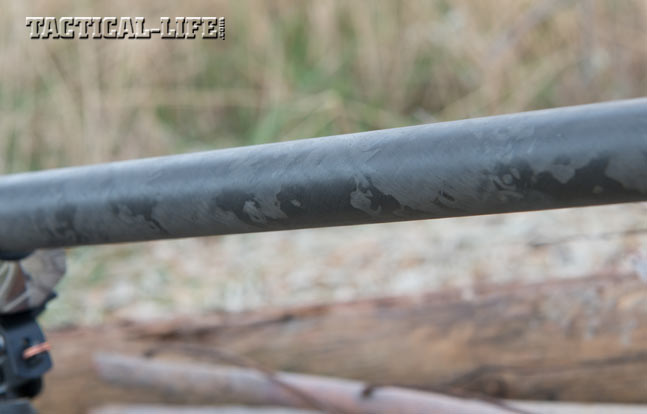Precision shooting in the field is about learning, then mastering the basics with modest practice. A once-in-a-lifetime shot should be a glorious moment of fulfillment, not a tragic disappointment. Training is the answer, and Magpul Dynamics has a customized Precision Hunter course designed to help hunters get the most out of their equipment and enhance their skills.
“The goal of every hunter is to take a successful, responsible and ethical shot when the shot of a lifetime presents itself,” says Mapul Dynamics Director of Precision Rifle Operations Caylen Wojcik. A combat-decorated Marine Scout Sniper, USMC Sniper School instructor and an avid hunter, Wojcik created a two-day curriculum to help hunters reinforce their fundamentals and add to their basic skill set. “The aim of the Precision Hunter course is to show hunters the capabilities and limitations of the equipment they plan to bring to the field, and employ it to its maximum potential.”

Proof’s Carbon Fiber
Advertisement — Continue Reading Below
I decided to put some modern technology to the test along with my shooting skills at the Precision Hunter course. Proof Research is a high-tech rifle manufacturer that’s the product of combining Lone Wolf Rifle Stocks, Jense Precision and a patent for carbon-fiber barrel technology. The company also recently acquired Performance Polymer Solutions, a company that makes components for the F-35 Strike Fighter. The Montana-based rifle company engineers lightweight precision ARs and bolt actions built around its proprietary carbon-fiber-wrapped precision barrels. Proof’s carbon-fiber wrap is a patented innovation that reduces weight and increases durability and consistency.
It looks a bit high-tech for a hunting rifle, but the weight savings from the carbon-fiber barrel balances out additional features that would otherwise be reserved for a benchrest or tactical rifle…”
Carbon fiber is 14 percent stiffer than steel and is seven times stronger per weight. As such, a typical 16-inch AR rifle barrel’s weight is reduced by 27 percent, and a hunting rifle barrel can weigh as much as a 40 percent less. Carbon fiber is not a particularly new material, but it continues to show up, replacing metal and even other synthetic composites where a decrease in weight and an improvement in strength are desirable. However, weight reduction is not the primary reason Proof utilizes carbon fiber; rather, it’s a fortuitous by-product. Carbon fiber is not only stronger, but it also reduces the amplitude of the barrel’s harmonics and improves heat dissipation. The result is a bullet that leaves the barrel with less harmonic interference (pitch and yaw) and stays cooler shot after shot. Where precision shooters have had to make steel barrels thicker to offset these phenomena, the carbon fiber accomplishes the task while reducing the weight.
Proof isn’t the first company to wrap its barrels in carbon fiber, but its reputation for getting it right—creating a rifle that is as strong and light as it is consistent and accurate—precedes it. Proof’s Derek McDonald notes, “It’s not just about the carbon-fiber wrap. Our steel barrel cores are match-grade and precision cut. No technology can make up for a poorly engineered and sloppily cut barrel.” Proof brought a rifle company in-house and considers the barrel manufacturing its core business. “Starting at $900, a shooter can have a Proof barrel custom-built to fit their favorite bolt action.” Designed to be fit by a gunsmith, Proof barrels are shipped threaded and chambered in a wide range of common calibers and standard twists with options for barrel lengths and external contours. So if you have a trigger, stock and action you prefer but want to upgrade or replace your barrel, Proof has an answer.
Advertisement — Continue Reading Below
For the Magpul Dynamics course, I ran a Proof Tactical II rifle chambered in 6.5 Creedmoor. Proof set the rifle up with a modified tactical stock that features a near-vertical grip and an adjustable cheekpiece. It looks a bit high-tech for a hunting rifle, but the weight savings from the carbon-fiber barrel balances out additional features that would otherwise be reserved for a benchrest or tactical rifle. Jewell made the trigger on this rifle, but Proof also outfits its rifles with Timney triggers. The rifle also has a Kryptek Highlander camouflage finish and came with a Harris bipod, which became a surprisingly versatile and frequently utilized shooting platform in the course. The barrel is 24 inches long with 1-in-8-inch, right-hand twist. The Tactical II also features a detachable five-round box magazine.
For optics, I mounted a Trijicon TARS 3-15×50 scope in a GDI quick-detach mount. The TARS is a rugged beast of a scope made from aircraft-grade aluminum with 0.25-MOA adjustments and magnification in the first focal plane. It also features a battery-powered, 10-setting, 0.33-MOA illuminated reticle. The small illumination at the intersection of the crosshairs is a significant aid in target acquisition and sight picture alignment, particularly when the target and the background are dark colors. All together, with the optic mounted, the rifle weighs just under 12 pounds unloaded.
The final element was the 6.5 Creedmoor ammunition. I chose the 120-grain Hornady A-MAX. With a G1 ballistic coefficient of .485 (a measure of the efficiency of the shape of the bullet as it passes through the air), the 6.5 Creedmoor dramatically reduces the effect of wind on the path of the bullet. Generally speaking, the bullet flies similarly to a .300 Winchester Magnum, but with a fraction of the recoil.
Advertisement — Continue Reading Below

Reality Check
For the first exercise of the Precision Hunter course, students confirmed the zeroes of their rifle and optics. But this basic task was not as simple an exercise as it sounds. Wojcik views a hunter’s setup holistically, or as an interdependent circle of components. The subparts include the rifle, the ammunition, the optics and the shooter. A simple zeroing exercise will quickly tease out shortcomings in a shooter’s profile. For example, establishing a natural point of aim (a relaxed, muscle-free sight picture) is not something many shooters have thought of, and a significant number do not have a rifle that will accommodate the proper body and head position. But a natural point of aim is a critical component to consistency in shooting and establishing a performance baseline for the rifle, ammo and optics. The Proof Tactical II has an adjustable cheekpiece, so I was only an Allen wrench and a quick adjustment away from a custom fit. However, many students had to build up field-expedient cheekpieces on their rifles. Those with high combs or Monte Carlo stocks typically had less trouble. What seemed superfluous at first quickly translated into a comfortable and consistent position for the shooter’s head behind the rifle. In the words of one student, “I never considered this. What a difference.”
“If Day One was a tune-up, an oil change and a detail of the hunter’s components, Day Two was a road race through an unfamiliar city…”
Wojcik then taught a brief lesson in external ballistics. Magpul Dynamics provided Applied Ballistic Mobile Calculators for the students, but some students had calculators of their own, and used them to develop DOPE (data on previous engagement) sheets for their respective rifles. DOPE gives the shooter a table for where the bullet will strike at specific distances. Shooting across a flat valley at multiple steel targets at known distances of up to 800 yards, students worked in pairs to make scope adjustments and determine holdovers at the various ranges. Through some initial frustrations, confidence grew as the fundamentals became more harmonized and shooters learned they could use their tools in a consistent manner. An afternoon of ringing steel and smiles replaced the furrowed brows of the earlier morning. I was spoiled. The large turret knobs of the Trijicon TARS adjusted the Proof rifle and 6.5 Creedmoor bullets through the course of fire with relative ease. Largely agnostic to the wind, particularly at ranges within 500 yards, the A-MAX rounds and Proof rifle ate the course in methodical bites. However, the rifle was made for this type of shooting, and the following day would provide a whole host of new challenges.
Advertisement — Continue Reading Below
Beyond Convention
If Day One was a tune-up, an oil change and a detail of the hunter’s components, Day Two was a road race through an unfamiliar city. Gone now were the flat, level ground and comfortable shooting pads. This day we stood, kneeled, sat and used bipods, tripods, shooting sticks and existing obstacles to our advantage. We also utilized bipods in ways we couldn’t have imagined. For example, rather than supporting a sliding stock on a limb or fence rail, we deployed just one leg of the bipod, which gave us right-angle support points on both the vertical and horizontal planes. This allowed us to slightly lean into the rifle and “load” weight and stability into the firing position. Though it took some practice getting the feel for a slightly unfamiliar body position behind the rifle, the stability of the crosshairs with the bipod-supported position was quickly obvious. Given its extra weight, many of the students, including myself, originally questioned the value of having a bipod on a hunting rifle. But after utilizing them in more than just belly-down firing positions, the collective consensus was that bipods were definitely valuable additions to modern hunting rifles.
The course of fire continued across various target ranges utilizing fence rails, debris piles and cable spools as simulated natural obstacles. Students found personalized ways to adjust their body positions and bipods to support their rifles and deliver consistent shots downrange.
Advertisement — Continue Reading Below

Perhaps the most notable portion of the course was instruction in the use of portable support devices, such as shooting sticks, tripods and trekking poles. It’s a common sight on an African safari to see hunters shooting off of thin sticks. So why is it so rare to see North Americans using them? The shots aren’t any more difficult in Africa. Their omission is certainly an oversight of vanity or habit. The addition of even the lightest, crossed shooting sticks will enhance the consistency of a shot in the field. You don’t get extra points for shooting off-hand at distance; in fact, choosing to do so when a supported position is possible should be rightly viewed as unethical. But the deployment and utilization of any shooting aid has to be practiced to be of any value. And with each option there are techniques that work more effectively for people of specific body types and physical abilities.
“After the Precision Hunter course, every student will have a clear understanding of the capabilities and limitations of their chosen rifle setup and skills…”
One simple but ingenious takeaway was the use of an inexpensive pair of trekking poles as shooting sticks. A valuable piece of gear in the backcountry, trekking poles lend stability across rocky terrain and help spread the load off of leg joints while hiking. A simple wrap of the handles through the wrist straps and the trekking poles become a stable bipod for a shooter in a seated or kneeling position. Modern carbon-fiber trekking poles weigh little more than even the cheapest fiberglass shooting sticks, and their versatility makes them a no-brainer addition to any backcountry packing list.
From hours of glassing for game and waiting in a sniper’s hide, Wojcik is an advocate of carrying a tripod to the field. The three legs of the tripod can be independently adjusted to provide a stable platform on flat or uneven terrain to support a spotting scope, binoculars or a rifle. It’s a choice to consider, particularly for backcountry hunters who must carry everything they need for the hunt in a single pack. However, given its multi-use capabilities and the stability it provides a shooter, investing in a lightweight, carbon-fiber tripod is a smart idea. Wojcik adds, “The tripod is a significant aid in reducing fatigue and vibration. When your glassing requirement involves picking apart wide swaths of country, using a tripod with binoculars for hasty searches and switching to a spotting scope for a detailed search will allow the hunter to focus on the what’s in front of him rather than supporting the optic.”
Advertisement — Continue Reading Below
Stretching Your Limits
While no shooting course can turn a hunter into an overnight expert, the Magpul Dynamics Precision Hunter course accomplishes two significant goals. First, it requires the hunter to use and evaluate with a critical eye his or her choices for the field. What works? What doesn’t? What should be changed? Second, it teaches new skills that extend the ethical range of the average hunter in a variety of scenarios. Like most things in life, learned skills are valuable only to the extent that they are practiced and mastered. But after the Precision Hunter course, every student will have a clear understanding of the capabilities and limitations of their chosen rifle setup and skills. Student shooter, Cabela’s ambassador and Team Rocky Mountain Elk Foundation hunter Kristy Titus agrees: “I now have a more comprehensive understanding of my weapon system and all of its components, which has helped me become a more independent shooter and hunter.”
As for the Proof rifle and the Trijicon scope combination, with its 0.38-MOA groups, the rifle performed beyond any reasonable expectations. The only limitations of the rifle were in the hands of this shooter.
Advertisement — Continue Reading Below
FOR MORE INFORMATION:
Magpul Dynamics
magpuldynamics.com; 877-462-4785
Proof Research
proofresearch.com; 406-756-9290
Advertisement — Continue Reading Below
